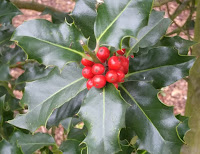©By Cheryl Bolen
 |
| London's Clarence House |
Clarence House has been a British royal residence since it
was commissioned by the Duke of Clarence in 1827, three years before he became
King William IV upon the death of his brother, George IV. The gracious white
stucco structure was built by John Nash, a favorite architect of the Duke of
Clarence's Regent brother. William IV preferred the four-storey house to the
official royal palace of St. James. Upon his death, he passed it to one of his
sisters, who enjoyed it the last three years of her life.
Queen Victoria then offered the house to her mother and
following that to a succession of her many children.
The building was bombed during World War II and after
repairs, housed the present queen before her ascension in 1953. Her daughter,
Princess Anne, was born there in 1950. Upon the death of the queen's father,
George VI, she swapped residences with her mother. Her maiden sister Margaret
also moved to Clarence House before taking apartments at Kensington Palace,
another of the royal residences in London.
 The late queen mother lived there
for half a century, edging out for longevity two of Victoria's sons, each of whom lived there
for more than 40 years, non consecutively. It will be a very long time before
any royal can ever exceed the number of years that centenarian resided at Clarence House.--Cheryl Bolen's
passionate Regency-set novel, One Golden Ring, re-released in December after being out of print for many years. It
won the Holt Medallion for Best Historical of 2005. Eloisa James wrote of it,
"Who can resist a marriage of convenience between a couple who have
nothing in common—but passion!"
The late queen mother lived there
for half a century, edging out for longevity two of Victoria's sons, each of whom lived there
for more than 40 years, non consecutively. It will be a very long time before
any royal can ever exceed the number of years that centenarian resided at Clarence House.--Cheryl Bolen's
passionate Regency-set novel, One Golden Ring, re-released in December after being out of print for many years. It
won the Holt Medallion for Best Historical of 2005. Eloisa James wrote of it,
"Who can resist a marriage of convenience between a couple who have
nothing in common—but passion!"














